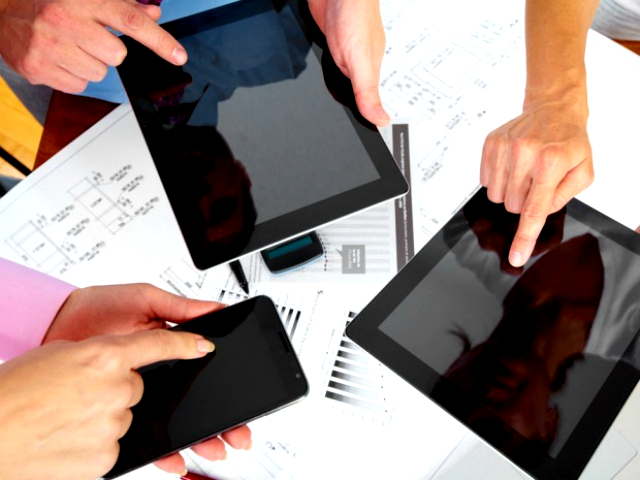Why BYOD could be the key to increased business productivity

A 'work device' isn’t what it used to be. Employees are no longer restricted to a single, company-issued device. Instead, they move between devices based on task, time of day, and location. One minute, they might be working at a desk on a Mac, while the next they are on the move, staying productive from an iPhone.
Research has shown that employees highly value the ability to choose which device(s) they use. In fact, 87 percent of respondents in an independent global survey, conducted by Vanson Bourne in 2021 said choosing their work device was important to them, and 89 percent said they’d even be willing to sacrifice part of their salary to be empowered to choose their own technology.
Freedom of technology choice is a major benefit for employees, but is often viewed as an obstacle for employers -- so much so that companies stray from offering choice at all, let alone allowing employees to work off of the same devices that they use to manage their personal lives.
However, failure to offer a bring-your-own-device (BYOD) option is a completely missed opportunity for businesses looking to improve employee experience, cut costs on device training/distribution, and ensure employees’ data privacy. In fact, a recent report by Cisco found that BYOD improves employees' creativity, productivity and pride in their workplace, and also offers companies cost savings of an average of $350 per year, per employee.
So, if companies are going to reap these benefits, correct device configuration has to be a top priority. This enables workers to connect to WiFi, download and open business applications, and meet security requirements to stay compliant and protected while accessing sensitive data, on whatever they chose to use as their work device.
And as this definition of 'work device' evolves to encompass mobile, personal, and contractor devices, the IT tooling that is used to configure them must also evolve to ensure that the configuration of the 'work device' is performed in an optimal, usable, and privacy-aware way.
Optimized BYOD
IT tooling should be capable of working in the background, offering zero touch activation and deployment technologies for company-owned devices that automatically receive a predetermined configuration based on device type, employee role, etc. For personal and contractor devices, the individual who operates the devices should be given a choice to opt in and enroll for "right-sized" management, where basic connectivity settings and security configurations are applied in a minimally disruptive fashion. IT tooling should take these differences into account and accommodate both automated, zero touch activations as well as user-initiated enrollments.
Usable BYOD
No matter what function a device is performing, it’s ideal when things 'just work.' On company-owned devices, where decisions related to initial configuration and baseline settings can be made by the organization, automating settings is required. But on personal and contractor devices, the IT tooling needs to respect the autonomy of the worker, while also making it such that tooling is non-invasive on the device owned by an individual or third-party. Self service options should be presented to empower the worker to configure their personal device in a way that maximizes user productivity.
Privacy-aware BYOD
Privacy is a fundamental human right. However, the amount of privacy available on different devices will frequently vary. On company-owned devices, privacy can be respected, but not always guaranteed. For example, the business may need to know the inventory of applications installed on the device so that it can take a proactive role in keeping them up-to-date and managing the space they consume on the device. This is not possible on a personally-owned device or contractor device where privacy must be rigorously respected.
In terms of configurations, there is such a thing as devices being over-managed and/or over-secured. If employees’ devices are enrolled in the company’s MDM system as a corporate-owned device, there’s a chance the IT department will have far too much visibility into employees’ personal matters.
However, carefully configuring devices with BYOD-ready MDM solutions allows employers to lock down the systems used for work purposes while also allowing employees to text their friends and families without fear of 'Big Brother' watching over their shoulder.
If IT managers do their research and handle configuration of personally-owned and contractor devices carefully, BYOD can result in happier employees, less time and money spent on device training and distribution, and improved trust.
Michael Covington is VP of Portfolio Strategy, Jamf, the standard in managing and securing Apple at work
